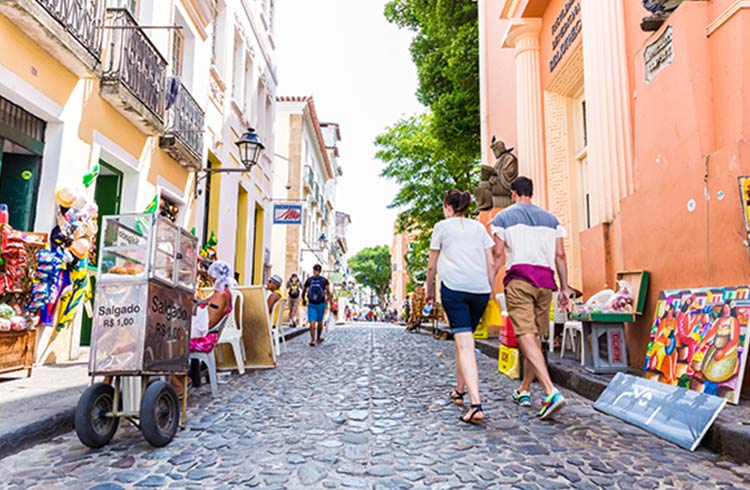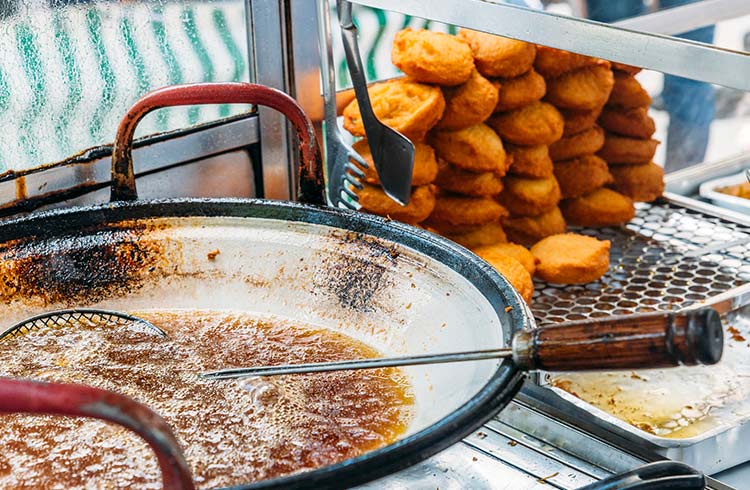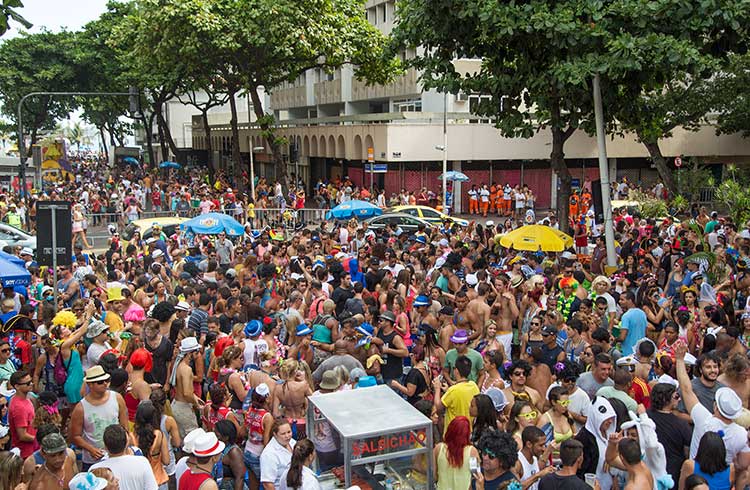Visiting Salvador, Brazil: A First-timer’s Guide
Our local expert tells you everything you need to know: where to eat, how to get around, plus tips on staying safe in Salvador.
 Photo © iStock/filipefrazao
Photo © iStock/filipefrazao
If you’re looking for Brazil’s home of rhythm and soul, Salvador is the place to go. Wild festivals and capoeira circles burst to life every night in colorful neighborhood plazas, while the delicious scent of freshly-cooked acarajé fills the evening air.
Although Salvador has a somewhat dubious reputation, with a little local knowledge there’s no reason to skip this vibrant and charismatic city.
Getting around Salvador
Taxis
Taxis are one of the best ways to get around the city, but if you don’t speak Portuguese or know the city well, expect to be scammed by a driver at least once. Many taxis in Salvador work without a meter, so make sure you agree on a price before you get in.
If you’re in a metered taxi, check to make sure the meter is on the right setting and driver has put it back to zero before they start driving. From 9pm–6am and all day Sundays and on public holidays, the metered rate goes from ‘1’ to ‘2’. This means your fare will automatically increase by 25%. If you’re outside those times, make sure the meter is set to ‘1’ so you’re not paying extra.
Salvador is a large city, so catching taxis can become expensive. If you’re on a tight budget, this is not the cheapest way to get around, but it is the safest option for going out at night.
If you plan to be doing a lot of sightseeing, it’s worth finding a good driver and negotiating a rate for him to drive you around during your entire stay.
Car Rental
Many Brazilians will tell you the best way to see Salvador is by car. However, this option is really only for those who have lots of experience driving in crazy cities and know enough Portuguese to be able to read the street signs and ask for directions.
The traffic in Salvador is known to be atrocious, so do your best to avoid rush hour. If you have to be somewhere at a certain time, allow yourself some extra time just in case.
It’s also worth remembering that if you’re going to see the Pelourinho, you can’t drive through the neighborhood, you’ll have to leave your car and walk.
Buses
The city buses are actually a great way to get around, especially if you’re visiting well-known tourist sites.
Although the price has gone up recently, a single trip on the bus still falls under 4 Brazilian Reais (BRL). This is about the equivalent of one US dollar at the time of writing so it’s the best option if you’re on a budget.
Google Maps’ public transportation feature works quite well in most Brazilian cities. Plug in your route and it’ll tell you what bus numbers to look for and where your nearest stops are. If you download the map before you leave your hotel, you can follow the little blue dot along and know where to get off. As long as the map is pre-loaded, this will work even with your internet off.
A few things you should be aware of though before you choose the bus. First, the drivers are pretty ruthless on the road. If you don’t manage to get a seat, be sure to hold on tight, signal for your stop early and when it’s your stop, be ready to hop off quickly. For some the ride is too crazy to be worthwhile.
While a taxi from the airport could cost you R$60 and up, the local bus is still under R$4. You’ll need to remember to bring coins or small bills, as some drivers might simply not let you on the bus if they can’t make change for your R$20 or R$50 bill.
Metro
The first few metro stations were completed for the 2014 World Cup. Though there are six operational stations in Salvador, they don’t reach any of the famous sites, beaches or the airport, so may not be useful to you. There are many planned stations which should help alleviate Salvador’s legendary traffic problem, but until then you can essentially disregard this option.
Ferry or Boat
If you want to head to Itaparica Island, Morro de São Paulo or Boipeba, you’re going to have to catch the ferry.
There are two different terminals – the main terminal and the tourist terminal. The tourist terminal (Terminal Turistico Maritimo de Salvador), which is located near the Merdado Modelo, is much smaller. It’s also generally more expensive as it’s where the fastest boats leave from and only passenger boats leave from this terminal. Cars and cargo are not accepted.
The main terminal (Terminal Maritimo de São Joaquim) has longer hours, more departure options and have ferries that will carry cargo and cars. The fares are lower but these boats are typically much slower, so if you’ve got limited time or are going for a day trip only, you’re better off at the tourist terminal.
Nightlife in Salvador
Salvador has an exciting nightlife, as it’s considered one of the country’s capitals for music and dance. The city frequently receives famous Brazilian singers and international acts. So when you arrive, grab a local newspaper and check out the show guide in the culture section to see what’s on. If your Portuguese is weak, ask the receptionist at your hotel to read it to you.
The Rio Vermelho neighbourhood is one of the best places to go for a night out. It’s full of bars, restaurants, shows and nightclubs and of course – Acarajé stands. This prolific Baian street food even has it’s own space reseved on the Salvador night scene.
Go to Largo de Santana, a public square in Rio Bermelho. The bars set up plastic chairs on the street and the square becomes a veritable intersection for bohemians, artists and tourists alike. While the bars keep the cervejas ice cold, it’s the Acarajé ladies who are the true stars. Although practically every corner has their own stand, Dinha and Regina are considered two of the most famous Acarajé mavens on the scene, each with their own die-hard fans. After taste-testing to find your own favorite (go for seconds – it’s gluten free), it’s time to check out the live music and club scene.
Casa da Mãe Espaço Cultural is a popular bar and live music venue. Mondays are jazz night and the rest of the week can alternate between Samba, Forró and MPB (Brazilian Pop Music). Shows usually start earlier, so it can be a great first stop on a night out.
Afterwards, head over to Common Studio Bar, a relatively new show space dreamed up by advertising exec Fernando Mariano and cultural producer Vince Athayde. The eco-friendly construction – the acoustic insulation is made partially from recycled PET bottles – this has quickly become known as one of the best live music venues in the city. Common holds just under 300 people at capacity and hosts everything from rock shows to forró, reggae and afrobeat, featuring both local artists and national stars. The shows are marked for 10 pm, but as you’re in Brazil, they typically start around midnight. Afterwards a DJ will keep the party going until the wee hours of the morning.
When the clubs start closing, those left standing head over to the Mercado de Peixe (the fish market), where cold beers and bar food keep rolling until the sunrise.
Food in Salvador
Tasting Baian food is an extraordinary experience. Fridays are unofficial Baian food night at most restaurants, so if you’re in town on a Friday, make room for some delicious Baian specialities.
Baian food is not only one of Brazil’s few discernible unique cuisines, it’s full of strong, amazing flavors. A few favorites to look out for are cocada, a coconut candy; moqueca, a coconut milk based fish stew; bobó de camarão, a creamy shrimp and coconut milk purée; acarajé, the black-eyed pea fried dough ball loaded with special sauces and spicy seafood made from heaven; carengejo, a Brazilian crab dish; and escondidinha de siri, an oven-baked pastry filled with a rich crab meat filling.

Souvenir markets
At the Pelourinho you’ll find everything from cheap and tacky to beautiful handmade goods. Or try Mercado Modelo, near Elevador Lacerda. This is a typical souvenir market; hot, crowded and the vendors can be aggressive. Luckily, there are a variety of food stands serving cold beers to get you through the heat.
Purchase a Senhor do Bomfim bracelet. These colorful ribbons are what cover the doors and gates at Senhor do Bomfim church. It's tradition to tie them onto your wrist with three knots, while you make three wishes. When the bracelet finally falls off, it's believed your three wishes will come true.
Money
Just like the rest of Brazil, getting money out at ATMs can be difficult in Salvador. Brazil is a closed banking system, so most ATMs aren't able to read foreign cards. If your card gets rejected, don’t give up – it’s usually a problem with the bank, not your card. Just try another branch of ATM nearby.
There is a network of red-colored ATMs called Rede24hrs, usually found at gas stations or convenience stores. You guessed it, they operate 24 hours a day, and 90% of the time they work with international cards. Otherwise, international banks like HSBC and Citibank will have a higher likelihood of accepting your card.
When it comes to cash, always carry small bills around with you. Many small businesses will turn you away before giving change for an R $50 bill.
If you're uncomfortable carrying cash around, it's becoming common for restaurants and shops to accept credit and debit cards. An additional fee might be charged, so try to keep a mixture of cash and cards available during your travels around Brazil.
Related articles
Simple and flexible travel insurance
You can buy at home or while traveling, and claim online from anywhere in the world. With 150+ adventure activities covered and 24/7 emergency assistance.
Get a quote

No Comments